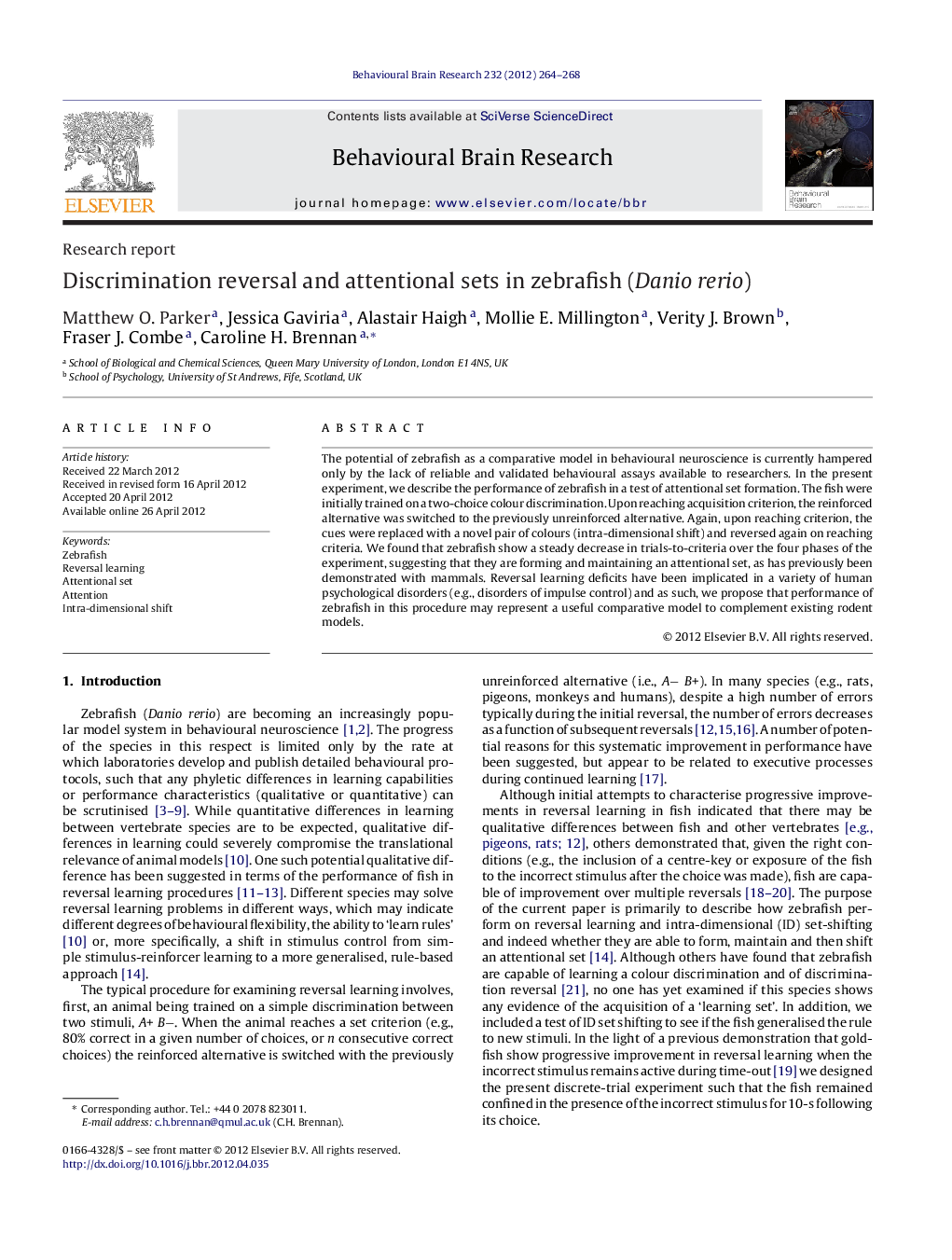| Article ID | Journal | Published Year | Pages | File Type |
|---|---|---|---|---|
| 4313120 | Behavioural Brain Research | 2012 | 5 Pages |
The potential of zebrafish as a comparative model in behavioural neuroscience is currently hampered only by the lack of reliable and validated behavioural assays available to researchers. In the present experiment, we describe the performance of zebrafish in a test of attentional set formation. The fish were initially trained on a two-choice colour discrimination. Upon reaching acquisition criterion, the reinforced alternative was switched to the previously unreinforced alternative. Again, upon reaching criterion, the cues were replaced with a novel pair of colours (intra-dimensional shift) and reversed again on reaching criteria. We found that zebrafish show a steady decrease in trials-to-criteria over the four phases of the experiment, suggesting that they are forming and maintaining an attentional set, as has previously been demonstrated with mammals. Reversal learning deficits have been implicated in a variety of human psychological disorders (e.g., disorders of impulse control) and as such, we propose that performance of zebrafish in this procedure may represent a useful comparative model to complement existing rodent models.
► First demonstration of improvement after intra-dimensional shift and successive reversals in zebrafish. ► Potential to use new assay for neurophenotyping zebrafish. ► Evidence for ‘rule learning’ in non-mammalian species.
